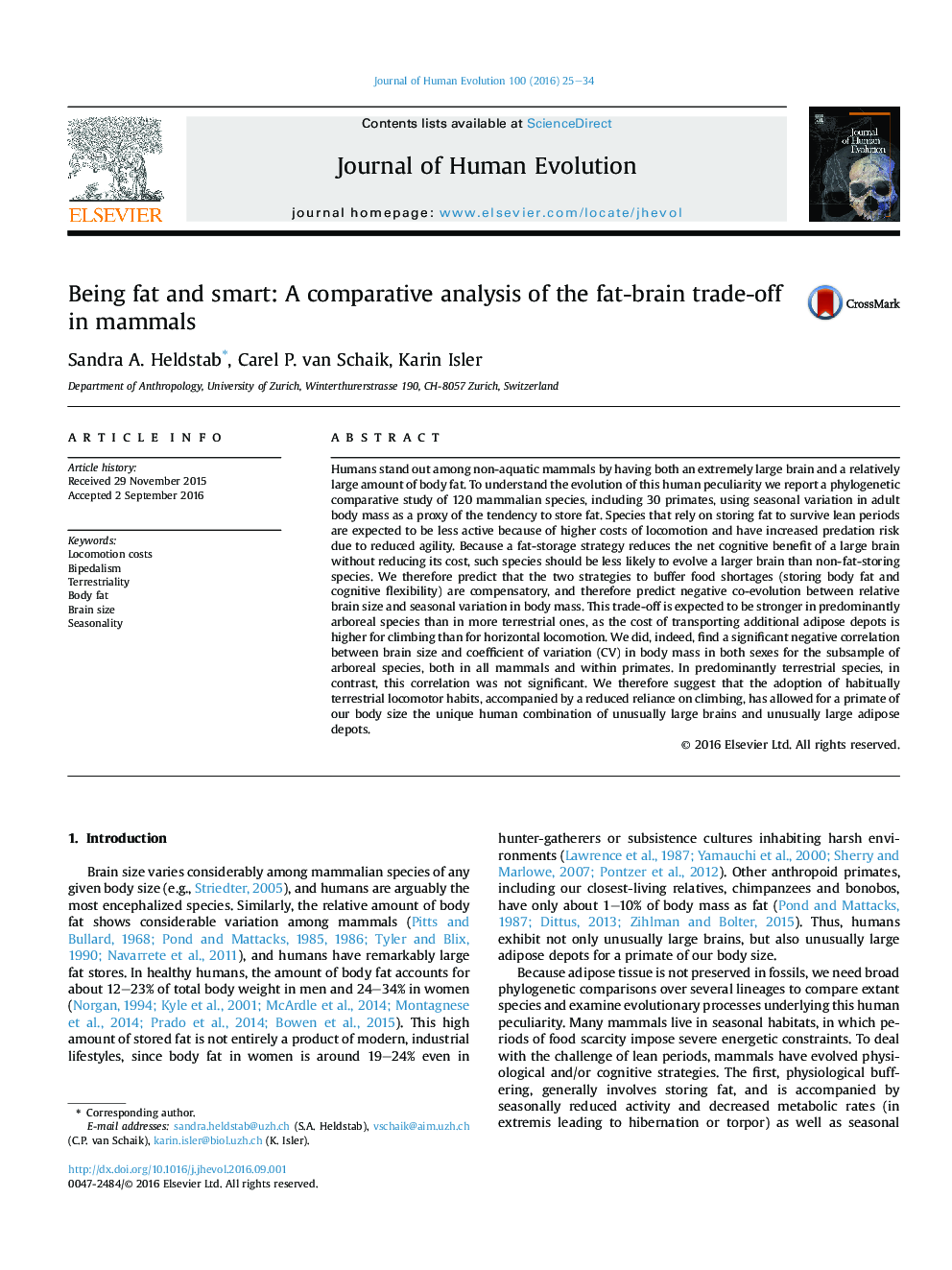| کد مقاله | کد نشریه | سال انتشار | مقاله انگلیسی | نسخه تمام متن |
|---|---|---|---|---|
| 4555756 | 1628149 | 2016 | 10 صفحه PDF | دانلود رایگان |
Humans stand out among non-aquatic mammals by having both an extremely large brain and a relatively large amount of body fat. To understand the evolution of this human peculiarity we report a phylogenetic comparative study of 120 mammalian species, including 30 primates, using seasonal variation in adult body mass as a proxy of the tendency to store fat. Species that rely on storing fat to survive lean periods are expected to be less active because of higher costs of locomotion and have increased predation risk due to reduced agility. Because a fat-storage strategy reduces the net cognitive benefit of a large brain without reducing its cost, such species should be less likely to evolve a larger brain than non-fat-storing species. We therefore predict that the two strategies to buffer food shortages (storing body fat and cognitive flexibility) are compensatory, and therefore predict negative co-evolution between relative brain size and seasonal variation in body mass. This trade-off is expected to be stronger in predominantly arboreal species than in more terrestrial ones, as the cost of transporting additional adipose depots is higher for climbing than for horizontal locomotion. We did, indeed, find a significant negative correlation between brain size and coefficient of variation (CV) in body mass in both sexes for the subsample of arboreal species, both in all mammals and within primates. In predominantly terrestrial species, in contrast, this correlation was not significant. We therefore suggest that the adoption of habitually terrestrial locomotor habits, accompanied by a reduced reliance on climbing, has allowed for a primate of our body size the unique human combination of unusually large brains and unusually large adipose depots.
Journal: Journal of Human Evolution - Volume 100, November 2016, Pages 25–34
